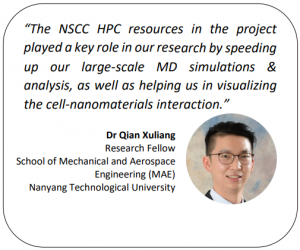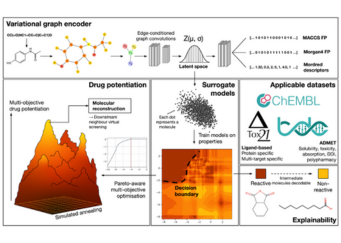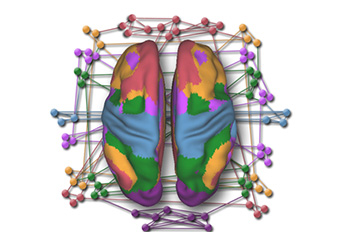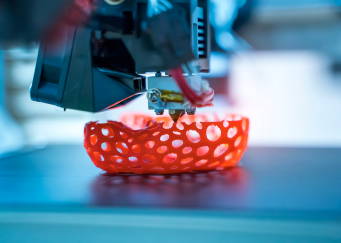Researchers from Nanyang Technological University leverage high-performance computing resources to better understand the interactions between nanomaterials and biological systems.
The field of nanotechnology is rapidly advancing and has the potential to revolutionise a wide range of industries, from medicine to electronics to energy. Nanomaterials, in particular, are utilised in the development of nanomedicines. Therefore, it is crucial to understand the interactions between nanomaterials and biological systems, such as cellular membranes, by carrying out systematic investigations on the pathological responses and molecular mechanisms in order to safely design, apply, and regulate novel engineered nanomaterials, in particular, 2D nanomaterials.
To date, most of the available data has been accumulated from studies on graphene-based materials. The results from these studies have shown that material geometries such as size and shape influence 2D materials’ interaction with cell membranes, and that sharp edges from graphene sheets can spontaneously penetrate cell membrane, leading to lipid extraction and membrane damage.
However, little is known about the biological interaction mechanisms of emerging 2D materials such as hexagonal boron nitride (hBN), a material which has great potential for application as substrates for electronic and optoelectronic devices, and as building blocks for engineered nanocomposites. What happens to a cell membrane upon the penetration of 2D materials with different sizes and shapes? How does hBN nanosheets interact with cell membranes? What is the driving force and the underlying mechanisms of such interactions.

To address these questions, a team of researchers from Nanyang Technological University (NTU)’s School of Mechanical and Aerospace Engineering (MAE), alongside Professor Gao Huajian, a Distinguished University Professor at NTU, are tapping onto NSCC’s supercomputing resources to gain a deeper understanding of the interaction mechanisms between nanomaterials and biological systems. By grouping different 2D nanomaterials into regulatory and risk categories, the team hopes to develop safe design strategies for the use of these materials in various applications and ultimately, generate substantial knowledge that will help guide the safe development and use of 2D nanomaterials in the future.
To find out more about the NSCC’s HPC resources and how you can tap on them, please contact [email protected].
NSCC NewsBytes January 2023
Other Case Studies
Advancing Drug Discovery Research using NSCC HPC resources
Researchers from Nanyang Technological University (NTU) are applying variational graph encoders as an effective generalist algorithm in computer-aided drug design (CADD)....
Gaining Deeper Insights into Mental Disorders through Brain Imaging and High-Performance Computing
Researchers from NUS are leveraging supercomputing to develop better strategies for prevention and treatment to mitigate the impact of mental illness. The human brain is a marvel...
Using Digital Twin Technology to Optimise the Industrial 3D Printing Process
Researchers from the Institute of High-Performance Computing (IHPC) are utilizing supercomputers to create a digital twin that furnishes users with comprehensive information...


